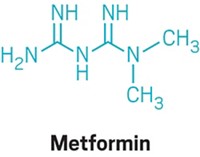Advertisement
Grab your lab coat. Let's get started
Welcome!
Welcome!
Create an account below to get 6 C&EN articles per month, receive newsletters and more - all free.
It seems this is your first time logging in online. Please enter the following information to continue.
As an ACS member you automatically get access to this site. All we need is few more details to create your reading experience.
Not you? Sign in with a different account.
Not you? Sign in with a different account.
ERROR 1
ERROR 1
ERROR 2
ERROR 2
ERROR 2
ERROR 2
ERROR 2
Password and Confirm password must match.
If you have an ACS member number, please enter it here so we can link this account to your membership. (optional)
ERROR 2
ACS values your privacy. By submitting your information, you are gaining access to C&EN and subscribing to our weekly newsletter. We use the information you provide to make your reading experience better, and we will never sell your data to third party members.
Biological Chemistry
Drugs That Regulate Metabolism May Treat Lupus
Autoimmune Disease: Immune cells in mice with lupus symptoms have overactive metabolisms, study shows
by Michael Torrice
February 19, 2015
| A version of this story appeared in
Volume 93, Issue 8
In a patient with the autoimmune disease lupus, immune cells attack the body’s own tissues as if they were an invading pathogen. This can lead to damage to the skin, joints, kidneys, and even the brain.
Now a team of immunologists reports that some of these errant immune cells have an overactive metabolism, and that inhibiting two key metabolic pathways can reverse lupus symptoms in mice (Sci. Transl. Med. 2015, DOI: 10.1126/scitranslmed.aaa0835).
The study provides compelling evidence that a combination of metabolic inhibitors could be an effective lupus therapy, say Manan M. Mehta and Navdeep S. Chandel of Northwestern University in a perspective they wrote about the study.
Before testing these inhibitors, Laurence M. Morel at the University of Florida and her colleagues first studied the metabolism of CD4+ T cells. In lupus, the immune cells command B cells to produce autoantibodies, which target the body’s own tissue.
When T cells are on the hunt for pathogens, they ramp up their metabolism so they can proliferate quickly. Morel hypothesized that in lupus patients, overly aggressive T cells would also have an overly active metabolism.
To test the idea, the researchers looked at two pathways involved in glucose metabolism: glycolysis and oxidation that occurs in a cell’s energy-generating mitochondria. Compared with T cells from healthy mice, lupus cells had lower pH levels and consumed more oxygen, signs of high rates of glycolysis and mitochondrial oxidation, respectively.
Morel and her team then tested two metabolic inhibitors on lupus mice: 2-deoxyglucose, which inhibits glucose metabolism, and metformin, which slows electron transport in the oxidation pathway in mitochondria. Lupus mice that received the two compounds in their drinking water showed a reversal of symptoms over three months. Levels of autoantibodies dropped, kidney health improved, and T-cell activation returned to normal.
Metformin is already approved by the Food & Drug Administration for treating type 2 diabetes, but Morel says she needs to collect more data on the inhibitors and their effects on the immune system before starting a clinical trial in lupus patients.






Join the conversation
Contact the reporter
Submit a Letter to the Editor for publication
Engage with us on Twitter